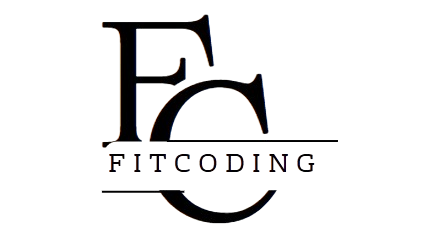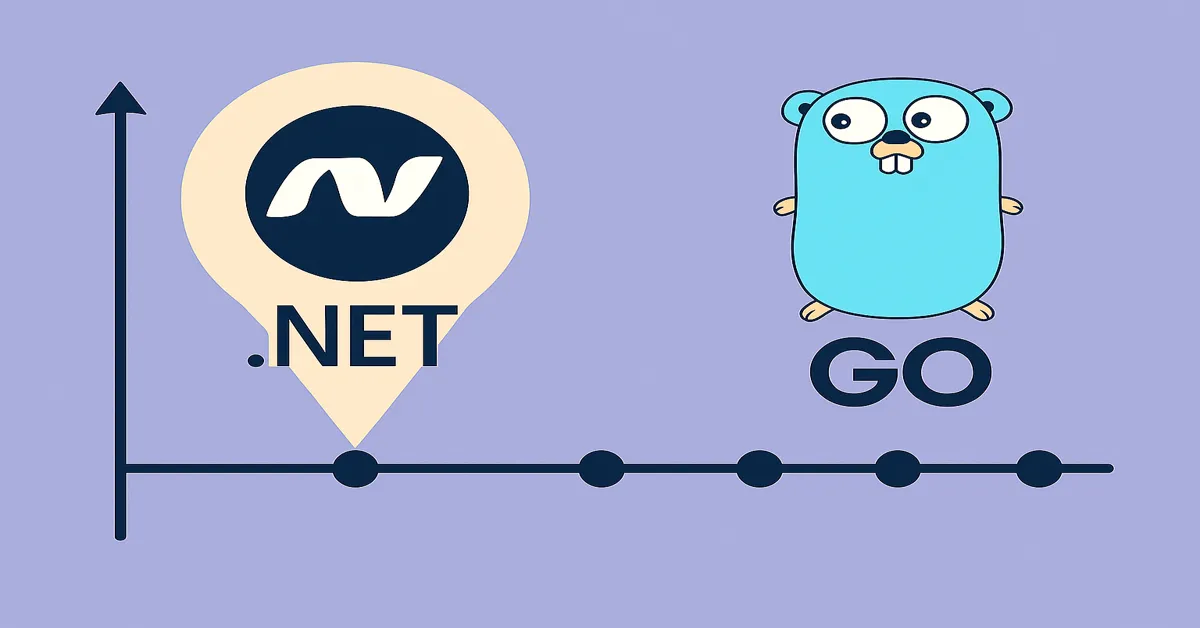In the architecture of modern software, few technologies have stood the test of time while continuously adapting and reshaping themselves to meet changing demands. .NET and Golang—seemingly disparate in origin, philosophy, and function—nonetheless share a common narrative: responding to the needs of a fast-evolving digital landscape – History of .NET and Golang.
This article walks through the timeline and deeper significance of each technology, exploring how they were born, how they grew, and what they came to represent—not just to developers, but to the software industry at large. By looking at their respective histories, we not only understand how these tools came to be, but why they continue to matter – History of .NET and Golang.
Chapter 1: The Birth of .NET – Enterprise Roots and Ambitions
1.1 The Microsoft Vision (1990s)
In the 1990s, Microsoft dominated the personal computing world with Windows, Office, and proprietary development environments like Visual Basic and COM (Component Object Model). But the web was changing things. Java had entered the scene as a cross-platform alternative, and Microsoft needed to respond.
1.2 .NET Framework is Born (2000-2002)
The official launch of the .NET Framework occurred in 2002 with .NET Framework 1.0. It introduced a bold new platform:
- Multi-language support (C#, VB.NET, F#)
- A unified runtime—the Common Language Runtime (CLR)
- The Base Class Library (BCL) for standardized functions
C# emerged as a flagship language, designed by Anders Hejlsberg, to compete with Java while incorporating modern syntax, type safety, and object-oriented programming.
1.3 Enterprise Adoption and Expansion (2003-2010)
During this decade, .NET became synonymous with Windows enterprise software. ASP.NET enabled web development, and Windows Forms/WPF covered desktop apps. Visual Studio became the dominant IDE.
.NET grew around the needs of large-scale, internal business applications:
- HR systems
- ERP solutions
- Healthcare management software
Despite its power, early .NET was locked to Windows—a fact that would become a liability.
Chapter 2: The Rise of Go – A New Kind of Language for a New Internet
2.1 Google’s Growing Pains (Mid-2000s)
At Google, engineers were facing a unique problem: scale. As web traffic exploded, their infrastructure—built on Python, Java, and C++—was straining under complexity. Build times were long, concurrency was hard, and language features were overengineered for many of their needs.
In 2007, engineers Robert Griesemer, Rob Pike, and Ken Thompson began creating a new language to solve these problems.
2.2 Introducing Go (2009)
Go, or Golang, was open-sourced in November 2009. It presented a philosophy that felt almost radical:
- Minimalist syntax
- Fast compilation
- Concurrency built-in (goroutines and channels)
- A powerful standard library
Go was created not as a language for academia, but for working software engineers building infrastructure, tools, and servers.
2.3 Adoption in the Infrastructure World (2010-2015)
Slowly but surely, Go gained traction. Its major advantages—single-binary deployment, cross-compilation, and native concurrency—made it ideal for:
- DevOps tools (Docker was written in Go)
- Cloud-native services
- APIs and lightweight web servers
As microservices architecture took hold, Go was ready.
Chapter 3: .NET Reboots – Reinventing for the Open Source Era
3.1 .NET Core Announcement (2014)
Microsoft knew it had to evolve. In a dramatic pivot, it announced .NET Core in 2014:
- Cross-platform (Windows, Linux, macOS)
- Modular and fast
- Open source under the .NET Foundation
This marked a turning point—not just technically, but philosophically. The company moved away from vendor lock-in, embracing a more community-driven development model.
3.2 .NET Core 1 to 3 (2016–2019)
Each version of .NET Core brought dramatic improvements:
- Performance increases
- Simplified project structures with SDK-style projects
- ASP.NET Core for fast, lightweight web apps
The developer world took notice. Enterprises began testing Linux deployments. Containers became a valid deployment model for .NET.
3.3 .NET 5, 6, 7, 8 – Unification and Modernization (2020–2024)
.NET 5 marked the beginning of unifying all .NET technologies—Xamarin, WPF, WinForms—under a single runtime and BCL. It removed the distinction between “Core” and “Framework.”
.NET 6 and 7 introduced:
- Minimal APIs
- Native AOT (Ahead-of-Time Compilation)
- MAUI (multi-platform UI)
.NET 8 and beyond aim to optimize performance for cloud-native workloads while retaining backward compatibility.
Chapter 4: Go Goes Mainstream
4.1 Docker, Kubernetes, and DevOps Explosion
Go’s real breakout moment came when Docker launched in 2013. Not only was Docker revolutionary, but it showcased Go’s strengths:
- Compact binaries
- Fast execution
- Concurrency for handling large I/O
Kubernetes followed. Originally developed by Google, Kubernetes is also written in Go. Along with it came tools like:
- Prometheus (metrics)
- Helm (package management)
- Terraform (infrastructure as code)
Go became the unofficial language of cloud-native computing.
4.2 Go in the Enterprise (2016–2022)
Adoption spread:
- Uber used Go for real-time dispatch systems
- Dropbox replaced Python backends with Go for performance
- Fintech startups built APIs using Go for speed and simplicity
While not traditionally enterprise-focused, Go became essential in the systems that enterprise developers depended on.
4.3 Go 1.18 and the Generics Debate
For years, Go resisted generics, focusing on simplicity. But developers wanted more expressive power.
In 2022, Go 1.18 introduced generics. The addition was carefully designed to fit Go’s style, allowing reusable code without sacrificing readability or performance.
Chapter 5: Contrasts in Design Philosophy
| Category | .NET | Golang |
|---|---|---|
| Origin | Microsoft, enterprise focus | Google, infrastructure focus |
| Typing | Strong, static, rich OOP | Strong, static, minimalist |
| Concurrency | Tasks, Threads, async/await | Goroutines, channels |
| Compilation | JIT + AoT | Static compilation |
| Platform Support | Cross-platform, cloud, desktop | Primarily cloud and CLI |
| Language Model | Rich abstraction, tooling-heavy | Minimalist, tooling-light |
| Use Case | Enterprise apps, APIs, UI | Microservices, cloud tools |
Chapter 6: Influence and Cultural Footprints
.NET
- Shaped enterprise software architecture
- Empowered generations of Windows developers
- Set benchmarks for IDEs (Visual Studio)
Go
- Redefined how we build scalable infrastructure
- Set the tone for DevOps and cloud-native tooling
- Sparked minimalist language design discussions
Chapter 7: The Present and the Path Forward
.NET Today
- Used across industries from banking to biotech
- Powering Blazor apps, serverless APIs, cross-platform apps
- Anchored in a mature ecosystem with Azure synergy
Go Today
- Dominant in infrastructure tooling
- Favored for greenfield APIs and microservices
- Backed by a robust open-source community and fast-paced iteration
Future Directions
.NET:
- Deeper integration with AI and ML
- Faster cold starts via NativeAOT
- Growth of MAUI for native cross-platform UI
Go:
- Expanded generics usage
- Enhancements in tooling and developer experience
- Continued dominance in container orchestration and observability
Conclusion: Two Roads, One Goal
The history of .NET and Go isn’t about competition—it’s about complement. Each was built to solve a specific class of problems for a specific kind of software world.
.NET helped define what enterprise software could be, while Go reimagined what internet-scale software should be. One thrives on rich abstractions and tooling. The other on minimalism and raw efficiency – History of .NET and Golang.
In a future of hybrid environments, polyglot teams, and increasingly specialized workloads, the coexistence of .NET and Go isn’t just inevitable—it’s strategic. Their histories are still being written. But their pasts already show us what it means to evolve with intent, to build with vision, and to shape the future by understanding where we’ve been – History of .NET and Golang.
This isn’t just a tale of two platforms. It’s a narrative about how modern development is no longer about one language to rule them all—but the right tool, in the right hands, at the right time – History of .NET and Golang.
Read:
Deep Inside of the .NET and Golang Platforms: A Technical Exploration
A Comprehensive List of Where .NET and Golang Are Used: Mapping Real-World Applications
The Efficiency of .NET and Go (Golang) Coding: A Contemporary Technical Analysis
Difference Between .NET & Golang Programming Languages
Step 1 to Learn .NET & Golang Programming: A Modern Beginner’s Blueprint
Step 2 to Learn .NET and Golang Coding: Deepening Practical Knowledge
FAQs
1. When was .NET first released, and what was its original purpose?
Answer: .NET was officially released in 2002. It was designed by Microsoft to offer a unified, multi-language development framework primarily for building Windows and enterprise applications.
2. Why was Golang (Go) created by Google?
Answer: Go was created in 2009 to address internal frustrations at Google with slow build times, complex concurrency, and bloated systems. It aimed to simplify development for large-scale infrastructure and backend services.
3. How did .NET transition to open source and cross-platform support?
Answer: In 2014, Microsoft launched .NET Core, marking its shift to open-source and cross-platform development. It culminated in .NET 5+, which unified the ecosystem and embraced Linux, macOS, and modern deployment models like containers.
4. What made Go popular in the cloud-native and DevOps space?
Answer: Go’s fast compilation, static binaries, native concurrency (goroutines), and minimalist design made it perfect for building tools like Docker, Kubernetes, and Terraform—cornerstones of cloud-native infrastructure.
5. How do .NET and Go differ in their design philosophy?
Answer: .NET emphasizes rich abstraction, enterprise tooling, and broad language support. Go champions simplicity, fast builds, and concurrency for scalable systems. They solve different problems but often complement each other in modern stacks.











